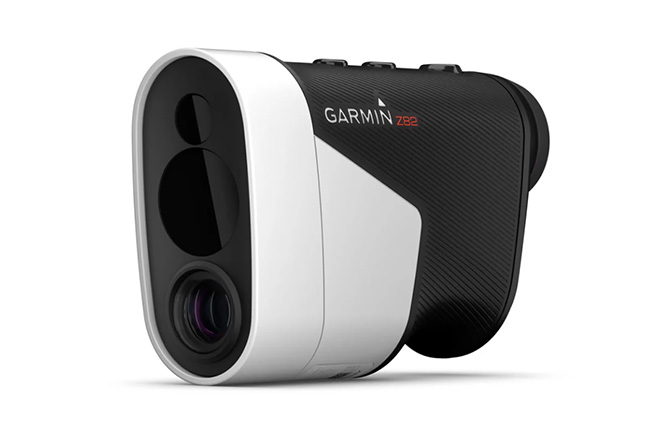57 Golf Terms Every Golfer Should Know
Golf is a sport rich in tradition and terminology, and understanding the language of golf is essential for both beginners and seasoned players alike. Knowing these terms not only enhances your understanding of the game but also helps you communicate effectively on the course. Whether you’re new to golf or looking to brush up on your vocabulary, here are 57 must-know golf terms to add to your lexicon.
Essential Golf Terms
Par
A par is the standard number of strokes an accomplished player is expected to need to complete a hole. A par is the baseline for scoring on each individual hole and each golf course. Golf courses are usually a par 72 but can be a 70 or 71.
Birdie
When a player completes a hole in one stroke under par, it’s called a birdie. For example, finishing a par 4 hole in 3 strokes is a birdie.
Eagle
Completing a hole in two strokes under par.
Albatross (Double Eagle)
Finishing a hole in three strokes under par.
Bogey
A bogey occurs when a player completes a hole in one stroke over par.
Double Bogey
Completing a hole in two strokes over par.
Triple Bogey
Completing a hole in three strokes over par.
Ace
A hole-in-one, where the ball is hit from the tee into the hole in one stroke.
Handicap
A handicap is a numerical measure of a golfer’s playing ability, used to enable players of different abilities to compete against each other. A handicap gives you ‘extra shots’ per hole based on your ability, it is calculated based on your previous rounds and how well you scored. A ‘scratch golfer’ is someone who plays off a handicap of zero.
Tee Box
The area from which golfers begin play on each hole.
Fairway
The short grass area between the tee box and the green.
Rough
Longer grass found off to the sides of the fairway, making shots more challenging.
Green
The area of specially prepared short grass around the hole known as the ‘putting surface’ or colloquially as the ‘dance floor’.
Sand Trap (Bunker)
A depression filled with sand, usually placed near the green or fairway. A bunker near the green is simply referred to as a ‘bunker’ and one on the fairway can be referred to as a ‘bunker’ or ‘fairway bunker’.
Hole (also known as ‘cup’ or ‘pin’)
The objective is to get your golf ball into the hole in the least amount of strokes (shots) possible. The hole is located somewhere on the green and is 4.5 inches (10.8 centimeters) in diameter.
Flag
The flag is what goes in the hole, so you know where the hole is from long distances. When you are on the green and putting for the hole you’ll remove the flag.
Pin
The ‘pin’ is the hole with the flag in it, when you are hitting towards the green from a distance you will aim for the pin. If you are putting on the green with the flag out, it is referred to as the ‘hole’.
Drive
The first shot taken on a hole, from the tee box. ‘Drive’ refers to a shot from the tee box using a driver. If you hit an iron from the tee box on a par 3 for example, it is referred to as a ‘tee shot’.
Approach Shot
The shot played towards the green with the aim of landing on the green and as close as possible to the pin.
Chip
A short shot played from near the green, usually with a lofted club such as a wedge or iron to get the ball onto the green and near to the pin.
Putt
A stroke made on the green with a putter intended to roll the ball into the hole. A putt can be made from off the green too, some golfers prefer to putt than chip when just off the green.
Divot
The piece of turf displaced by a golf club during a stroke. A divot can also refer to the indent a golf ball leaves when landing on a green.
Caddie
A person who carries a player’s clubs and provides advice and moral support.
Hazard
A bunker or water feature on the course that adds difficulty to a hole.
Green Fee
The fee paid for a round of golf, typically covering course maintenance costs.
Fore
A warning shout given when a player hits an errant shot that may endanger others on the course.
Out of Bounds (OB)
Areas on the course where play is not allowed, often marked by white stakes or lines.
Drop (take a drop)
If your ball goes out of bounds or enters a water hazard you then take a ‘drop’ with a new ball where the ball entered the water but no nearer to the hole.
Penalty Stroke
A penalty stroke is an extra ‘stroke’ which must be counted on your score when you take a penalty. If your ball goes out of bounds for example, you’ll be required to take a drop and incur a penalty stroke.
Provisional ball
When you hit a second ball due to the first one potentially going out of bounds. A provisional ball is played and the penalty is taken if the first shot is confirmed to be out of bounds or the golf ball cannot be found.
Mulligan
A do-over shot, not allowed in formal play but sometimes used in casual rounds.
Stance
The position of a golfer’s feet and body in preparation for a shot.
Lie
The position or placement of the ball on the course. If your ball is in long grass in the rough or a slight divot then it would be best described as a ‘bad lie’. If your ball was on a perfectly manicured fairway, it would have a ‘good lie’ for your next shot.
Fade
A golf shot that curves gently from left to right for right-handed players (opposite for left-handed players).
Draw
A golf shot that curves gently from right to left for a right handed golfer (opposite for left-handed players).
Hook
A golf shot that curves sharply from right to left for right-handed players (opposite for left-handed players). A hook is created by a particular golf swing which puts significant sidespin on the golf ball – causing it to curve dramatically.
Slice
A golf shot that curves sharply from left to right for right-handed players (opposite for left-handed players). A slice is created by a golf swing that starts out wide and cuts across the ball- creating significant side spin on the golf ball and a left to right ball flight.
Fat (hitting a ball ‘fat’)
Hitting a ball ‘fat’ is when you take too much grass before striking the ball, resulting in a loss of distance and poor height on your shot. This is one of the more interesting golf terms.
Thin (hitting the ball ‘thin’)
A ‘thin’ shot (also referred to as ‘blade’ or ‘skinny’) is when you hit the ball too high up on the ball and the bottom of the club face strikes the ball mid way up. This creates a low shot which usually gets decent distance but is far from ideal.
Top (topping the ball)
If you hit the very top of the ball it is referred to as ‘topping the ball’ or you could say ‘I topped it’.
Driver
The longest club in a golfer’s bag, used for tee shots on longer holes, also called a 1 wood. The driver hits the longest of all golf clubs.
Fairway wood

A driver is a 1 wood, however, you can also get a 3 wood (pictured above) or 5 wood which are referred to as ‘fairway woods’. They are called fairway woods because they are used from the fairway whereas the driver is almost exclusively used from the tee box with the golf ball on a tee. Fairway woods have a progressively higher loft as they increase in number.
Hybrid
A hybrid golf club is a hybrid of a fairway wood and iron which is used for long shots ranging from 140 to 190 yards.
Iron
A type of golf club with a flat, angled face, used for medium-range shots. Irons are the most numerous clubs found in a golfers arsenal.
Wedge
A type of golf club used for short, high shots around the green. Variations of wedges include: pitching wedge, approach wedge, gap wedge, sand wedge and lob wedge. Each type of wedge varies in their loft degrees.
Putter
A specialized flat faced club used on the green for putting.
Loft
Loft refers to the angle (degrees) of the club face relative to the vertical plane. Putters have a flat face with a loft of only a few degrees, wedges on the other hand have a high degree of loft, up to 60 degrees.
Club head
The end of the club which hits the golf ball.
Shaft
The golf club shaft connects to the club head and the golfers holds onto the other end of the shaft to swing the club. Shafts are made from either steel or graphite, their flex or ‘stiffness’ affects performance.
Grip
The rubber grip at the top end of the golf club shaft which the golfer holds onto.
Tee
A small timber or plastic ‘tee’ to raise your golf ball up off the ground – making it easier to hit, particularly with a driver. Tees can only be used on the tee box for your first shot of the hole.
Rangefinder

A golf rangefinder tells you how far away the pin is, this helps you make the right club selection with your approach shot.
Gimme
A ‘gimme’ is a short putt that other players agree can be counted without actually being holed. A gimme is given in casual rounds within a foot or two of the hole, basically like an ‘unmissable’ putt.
Stroke Play
A basic and common form of scoring in golf. Every stroke is counted and added up to give an overall score for the round.
Match Play
A form of head-to-head competition where two golfers compete to win each hole. The player who has won the most holes at the end of the round is the winner.
Ambrose
A team competition where you play in teams of 2, 3 or 4 players. Each player has their shot and the next shot is taken from the location of the best shot.
Stableford
A scoring system that uses points, if you match the target (par or your handicap, depending on the specific rules) for the hole you receive 2 points for that hole. If you better your target, it is an additional point for every stroke under your target for that individual hole. One stroke worse than your target is 1 point, and two strokes or more worse than the target is 0 points.
Using Golf Terms to Your Advantage
There are far more golf terms than just the ones on this list. Golf balls for example, can vary greatly and they themselves have many terms associated with them. They can either be 2 piece or 3 piece constructions, high or low spin, high or low compression and much more. To learn more about golf balls and what type suits your game best see: What Golf Ball Should I Use?
Understanding these common golf terms will not only help you navigate the golf course more confidently but also deepen your appreciation for the intricacies of the game. Whether you’re discussing strategy with fellow players or following commentary during Tour professional tournaments, having a firm grasp of these terms ensures you’re always in the swing of things on the green. To fully appreciate and enjoy the game of golf, understanding golf terminology will go a long way to your overall satisfaction of the game. Happy golfing!
